6 Steps to Create a Unique Selling Proposition with Examples
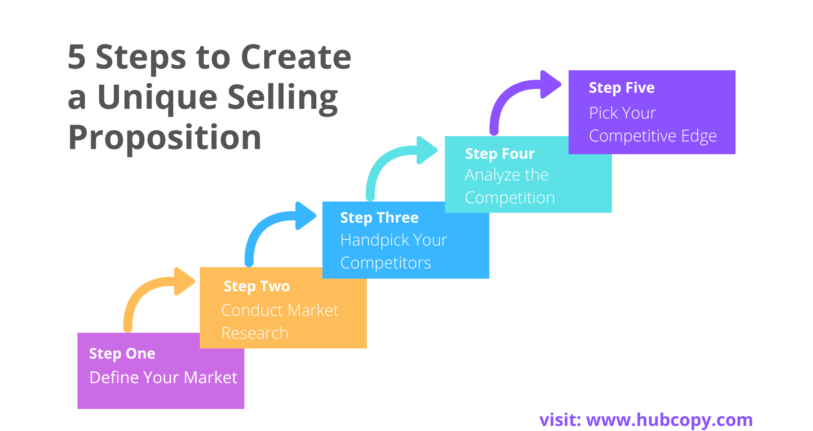
Creating a strong USP (unique selling proposition) benefits your business in many ways.
According to several studies like this from HubSpot, companies with well-defined USPs…
- Command premium pricing
- Enjoy higher customer loyalty, and
- Experience more sustainable growth.
That’s because when customers feel connected to your brands in any way, 57% will increase their spending and 76% will choose you over competitors.
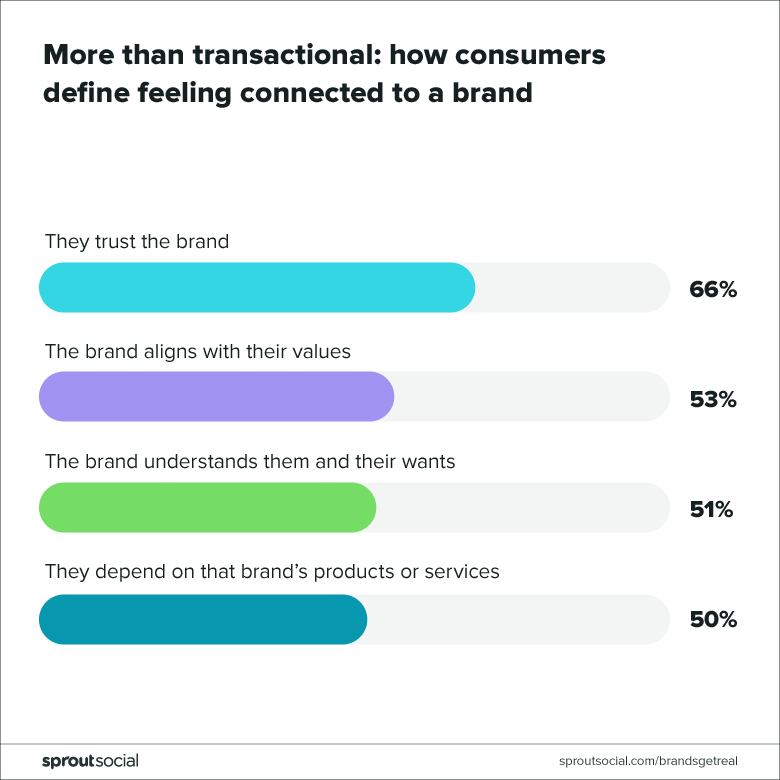
But let’s face it, creating a unique selling proposition is not a walk in the park.
You need to get to the heart of what makes your brand awesome. Align it with your potential customers’ needs. And tell the story in a way that sticks.
This guide will teach you how to do just that.
I’ll show you how to create a unique selling proposition that drives business growth. After that, give examples of powerful USPs to inspire yours.
Let’s start with the unusual stuff.
How Not to Create A Unique Selling Proposition
Most USPs fail as early as in their ideation stage due to 2 often overlooked mistakes.
Over the years, I’ve seen many business owners commit these 2 USP blunders without being aware.
I called them the 2 USP traps:
- The Perceived USPs and,
- The Creativity Trap
1. The Perceived USPs
You are a business person. It would surprise no one that you love your creation.
But this love could be a stumbling block, especially when your product offers many amazing features.
You can’t possibly roll all out as your selling points.
And trying to pick one as your brand’s overarching selling proposition comes with serious headaches.
But let’s say you eventually settled for one.
I’d tell you boldly that what you’ve got is not a unique selling proposition.
It’s merely a perceived USP. Because…
It’s about you and your product, not your target customers and the market.
You didn’t even factor in your competitors’ strengths and weaknesses.
A powerful USP shouldn’t be about how you see your business, but rather, how your ideal customers perceived your value.
Advertising guru, Rosser Reeves, says it best:
“The proposition must be strong enough to move the masses, i.e., attract new customers.”
Your USP must be more than just a feel-good statement about how awesome you think you are.
Can it attract new customers? Or retain existing ones? Those are the questions.
To create a truly unique selling proposition, you must take off your rose-colored glasses, dive deep into research, and analyze your market like a scientist.
That’s the only way to unearth what genuinely sets you apart.
2. The Creativity Trap
If you are one of those business owners who think creating a USP is an out-and-out creative process.
Well, I’m glad to tell you it’s not.
More often than not, a creative-first approach to USP results in fancy slogans with little to no business impact.
A USP is a means to an end.
You want to carve an identity for your brand in a competitive market, attract a unique set of customers, and prime your business to serve them.
Your USP is the bridge that connects the path between your business and this unique set of customers.
To build that bridge, you must understand the terrain (your market) and load-bearing requirements (customer needs) before putting up any structure (your competitive edge).
(P.S. I’m not an engineer, just thinking out loud like one).
This means you don’t write a USP. You discover it.
By:
- Listening to your market
- Finding your ideal customer’s pain points
- Identifying the gaps your competitors aren’t addressing and
- Finding that sweet spot where your strengths meet customer needs.
As you can see, creating a USP is not an absolute game of creativity. It’s a game of intentional differentiation.
Let’s play.
Before we start, you may want to ask…
What Is the Relationship Between Unique Selling Proposition and Value Proposition?
A value proposition tells the customer what you do, while a unique selling proposition tells them why you’re the only one who can do it this way.
Like you, I was once confused about these two marketing terms. But after several hours of research, I figured out there are 7 differences between them.
You can check out this fundamentals of unique selling proposition guide for a breakdown of these differences with examples.
How to Create a Unique Selling Proposition in 7 Steps
- Step 1: Define Your Market
- Step 2: Conduct Market Research
- Step 3: Identify Your Unique Customers
- Step 4: Handpick Your Competitors
- Step 5: Analyze the Competition
- Step 6: Pick Your Competitive Edge
Step 1: Define Your Market
Defining your market is the first step towards a ferociously unique selling proposition.
Market definition involves streamlining your business’s focus to the market segment where you can deliver the most value.
For example, say your business is in the software development space.
The market is large as you have potential customers in all businesses that need software.
Trying to reach all will be a high-labor-low-reward endeavor. It might even be outright futile.
You must divide this broader market into segments and select the segment most likely to benefit from your products or services.
There are 2 ways to do this:
- By scope
- By niche
1. Streamlining by scope
Streamlining by scope means identifying business types and sizes you want as customers.
Here are some examples of target markets a software company can target:
- Small businesses looking for custom software for their operation
- Fortune 500 companies in need of enterprise software
- Startups that want software to automate workflow
- Mid-size digital enterprise seeking an all-in-one project management software
2. Streamlining by niche
Here, you select your target market by focusing on niches.
Here are some examples:
- Social media marketing software for solopreneurs
- Funnel automation software for new business
- Affiliate management dashboard for affiliate marketers
- Patient intake software for medical doctors
- Invoicing and accounting software for eCommerce stores (I’ll pick this and build on it throughout this guide)
The more granular you get about the process, the better.
Market definition demands a thorough understanding of your current business landscape.
Remember, you aren’t streamlining for the sake of it.
The objective is to select a market segment that best aligns with your core strengths and offers meaningful growth potential.
Step 2: Conduct Market Research
With step one out of the way, our company now offers…
“Invoicing and accounting software for eCommerce stores”
The next step is to understand the chosen market segment better.
Market research helps you discover customer needs, market dynamics, and potential opportunities.
You should use both primary and secondary research methods to gather data.
Primary research methods include surveys, interviews, and focus groups with your target audience.
Secondary research involves analyzing industry data, studies, stats, research papers, and reports.
The questions you are looking to answer here are:
- What are the biggest challenges my audience faces in this niche?
- What values or features matter most to them?
- What trends are shaping their decisions?
- What gaps exist in the current market offerings?
The outcome of your research might look like the following:
From Surveys: eCommerce owners struggle with tracking profit margins across multiple sales channels (e.g., Shopify, Amazon, and Etsy).
From Social Media: Users express frustration about the lack of automation in categorizing expenses or integrating with payment gateways.
From Industry Reports: There’s increasing demand for tools that offer real-time analytics and inventory cost tracking.
Now you know a lot about this market. Let’s put it in one sentence:
eCommerce sellers want accounting software that seamlessly integrates with multiple platforms, automates manual processes, and provides actionable financial insights.
Step 3: Identify Your Unique Customers
Market research gives you a broad understanding of the audience.
While that’s a good starting point. It’s still not enough.
We are interested in those who’ll benefit most from our product.
So, we need to create a detailed profile of our ideal customer personas.
A typical customer persona defines key attributes like:
- Demographics: Age, location, income, job title
- Lifestyle: Hobbies, interests, and values
- Pain Points: The challenges or frustrations they face.
- Goals and Motivators: What they want to achieve and what drives them to take action.
Since not all eCommerce sellers will fit into one category, we’ll have multiple personas.
As such, we can further segment them based on shared traits like below:
Small Store Owner Steve: Runs a single Shopify store and needs simple, cost-effective tools.
Multichannel Maggie: Operates across Amazon, Etsy, and eBay and requires robust integrations.
Growth-Focused Greg: Owns a growing brand and values detailed financial insights and scalability.
Once we understand who our ideal customers are, the next step is to figure out their unique pain points and motivators.
At this point, we are already aware of their needs. But we also need to know what motivates them to act.
Beauty and fashion marketers have a solid grasp of this concept.
Consumers buy fashion products to look beautiful, feel luxurious, and impress their friends.
So, instead of selling the products, they sell those desires.
Think.
If all you do is sell clothes, build furniture, or develop software, your competitors are in the same race.
To edge them out, you must differentiate yourself by selling the sizzle, not the steak. Your USP will light the sizzle.
For our e-commerce accounting software, we’ll consider what deters people from these products.
These include integration compatibilities, usage difficulty, manual tax inputs, etc.
Hence, our customers want:
- To save time and focus on scaling their store.
- peace of mind knowing their finances are accurate
- tools that are user-friendly and efficient.
Now we know our ideal customers inside and out.
Meet one of them- Multichannel Maggie:
Persona Name: Maggie
Age: 34
Location: Austin, TX
Income: $120,000/year
Business: Sells handmade jewelry on Amazon, Etsy, and her website.
Pain Points:
*Struggles to consolidate inventory and revenue data across platforms.
*Finds it difficult to keep track of tax obligations for each sales channel.
Goals:
*Wants a tool that integrates seamlessly with all her platforms.
*Desires automated expense tracking to reduce time spent on bookkeeping.
Motivators:
*Values simplicity and efficiency.
*Is willing to pay more for a tool that saves her time.
Key Insight: Maggie needs a solution that’s intuitive, fully integrative across platforms, and simplifies tax preparation.
With that, we can create a USP that’s a natural expression of the desires of all Multichannel Maggies out there.
Propositions like;
- The Only Accounting Software that Integrates With All E-commerce Tech Stack.
- The E-commerce accounting Software with Zero Learning Curve
- Ecommerce accounting, 100% Automated
But we aren’t done yet.
Step 4: Handpick Your Competitors
By handpick, we mean…
Select the competitors that have the type of customers you want to serve.
You don’t need 50, the top 5 is okay.
Focusing on a manageable number of competitors helps you get all the critical details of their business.
Here’s how to handpick competitors in 3 steps:
- Identify Key Competitors: Look for businesses that are targeting the same customer segments as you. They are your borderline competitors, businesses offering accounting tools for small and medium-sized eCommerce businesses.
- Check Customer Base: Identify which competitors are most successful with the type of customers you want to attract. Look at their customer reviews, testimonials, and social media presence to get a sense of their audience.
- Narrow Down: Based on your analysis, select the top 5 competitors that have the closest alignment with your target customer base. These are the competitors you’ll focus on for deeper analysis.
Step 5: Analyze the Competitors
Note; we do this not to create a laundry list of their competitors’ offerings.
But what are we looking for? 3 things
- Strength: What do they do exceptionally well? Where do they receive the most customer praise? Understanding their strengths helps you identify areas where you’ll need to innovate.
- Weaknesses: Look for consistent customer complaints, limitations in product features or service offerings, or areas where they fail to fully address customer needs. These weak points are potential entry points for you.
- Opportunities: What gaps are the leaving you can exploit? Look for areas where your competitors are falling short, such as gaps in market coverage.
You can find out this much about your competitors in many ways.
Start by examining each competitor’s public-facing materials. This includes their websites, marketing collateral, and social media channels.
Customer reviews and feedback are gold mines of competitive intelligence. You can find real users’ feedback on third-party review platforms like Trustpilot and TrustRadius.
Software aggregator sites like G2 and Captera could also be of immense help.
Step 6: Pick Your Competitive Edge
The step above will put several fillable gaps at your mercy.
What’s left is for you to choose the best angle to hit the market.
And that should take you back to the drawing board.
Here, you’ll do a careful synthesis of everything you’ve gathered so far.
Look at the intersection of your strengths, your customers’ deepest needs, and your competitors’ limitations.
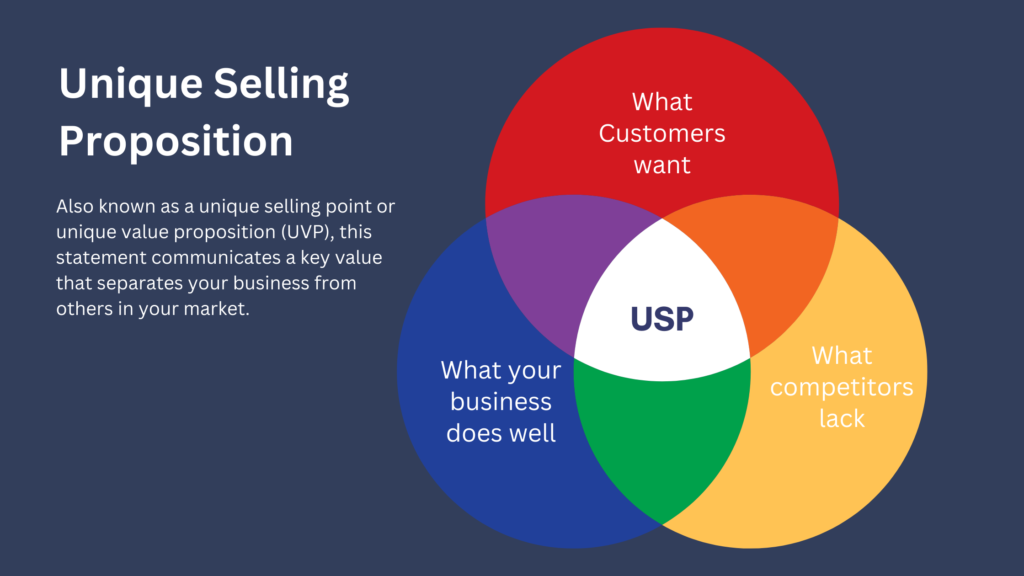
You’ll see that gap where your business’s unique capabilities perfectly align with an unmet market need.
Note that you aren’t on the hunt for anything entirely new. If you do find one, that’s good.
Your USP may be from a market-influencing question your competitors are yet to answer.
An example is M&M’s USP for its sugar-coated chocolate.

(Check out our introduction to unique selling propositions guide for details).
And remember it’s not always about the product. You could see an existing challenge from a completely different perspective.
As I’ll show you below, some of the most successful USPs ever created were product-independent.
Over decades, numerous research has shown that customers are loyal to brands whose stories they connect with.
So, ask yourself: What’s my “why”? Why did I start this business? What values drive me?
If our eCommerce accounting software was inspired by our struggle to find a great tool, we can tell that story to create an emotional connection that competitors can’t replicate.
That’s not to say practical features are non-essential. They are.
Only that people often make decisions based on emotions.
The most compelling stories bridge the gap between functional benefits and emotional aspirations.
They speak to something larger than the product itself. They address deeper human desires, challenges, and dreams.
Look at Revlon’s famous approach as stated by their founder:
“In our factory, we make lipstick. In our advertising, we sell hope.”
Think about what your product symbolizes for your audience.
Does it offer freedom from stress, a chance to save time, or the opportunity to grow their business?
For an eCommerce seller, our software could represent confidence and peace of mind, knowing their finances are in order.
With the steps above, you should have something solid to consider as your USP.
Your next challenge, however, might be how to word it.
But don’t worry, you can take a cue from some of the most successful USPs ever written.
Let’s explore these 5 examples together.
5 Types of Unique Selling Propositions That Work
Businesses enter the USP playground with all sorts of attires.
The goal of each is to put up a unique show that attracts its ideal set of spectators.
Hence, unique selling propositions are not created equal.
We’ve handpicked 5 great examples of unique selling propositions and explained why they work below.
1. Philanthropy- Tom’s one-for-one USP
Charity makes everyone feel good.
A unique selling proposition can sit on such an emotional principle.
Before its fall, Toms’s one-for-one concept is a prime example.
“With every pair you purchase, TOMS will give a pair of new shoes to a child in need. One for One”
It brought a humane perspective to USP, which shoe shoppers globally respond to positively.
Consumers perceived buying from Toms as a way to help poor people. This USP crusade kept Toms in business for decades.

Even if consumers had to pay more, they wouldn’t mind, as they’d be helping children in need. Not to even say Toms’s products were affordable.
Buying a pair of shoes from Tom’s was never perceived as a financial ask.
Instead, consumers see it as fulfilling part of their obligations to humanity.
2. Simplicity- Everyone can design with Canva

Simplicity is another effective means of differentiation.
Canva is an online design tool that allows anyone with or without design knowledge to create and publish high-quality visuals.
Canva brings simplicity to the design market and, in no time, puts traditional design tools like Photoshop and Illustrator in its wake.
Canva USP goes thus;
“Empowering the world to design.”
The design tools available before Canva were sophisticated. Mastering them takes months of intensive training.
Canva breaks the barrier with its drag-and-drop editor, billions of customizable templates, and millions of pre-set use cases.
Today, anyone with an internet connection can create expert-level marketing materials in minutes.
Thanks to Canva, small businesses, and entrepreneurs now spend less on design teams and agencies.
3. Speed- FedEx overnight delivery
“When it absolutely, positively has to be there overnight”
FedEx pulled the speed lever in the logistics industry in 1973. And to prosperity, it did
FedEx was not the first delivery company in the United States and unarguably not the best at the time.
However, the company was the first to introduce overnight air shipping.
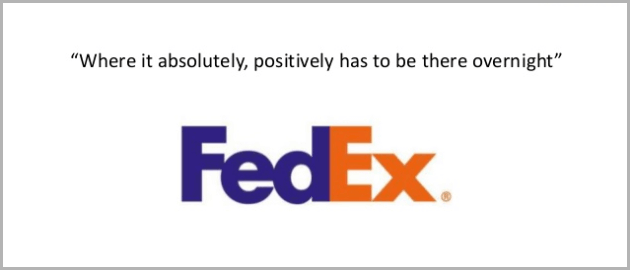
When the market yearned for super-fast delivery, FedEx responded and carved a new market for its business.
The USP catalyzed FedEx’s growth above competitors like DHL and UPS.
Even though competitors have caught up today, FedEx has the pioneering edge.
4. Guarantee- Domino’s 30-minute Pizza
Pizza shops are ten in a penny.
Domino found itself in this crowded market, wanted a clear differentiator, and then came up with this USP:
“Fresh, hot pizza delivered in 30 minutes or less—or it’s free.”
It’s on record that this USP catapulted Domino to the best-selling brand in the United States.
What made it work? Guarantee.
Customers’ minds are at peace about getting fresh pizza delivered on time.
Domino’s saves them the trouble of visiting outlets or waiting for journey-tired pizzas.
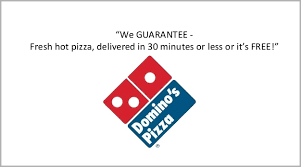
In a competitive market like this, many brands run to the cover of price to stay in business. Domino’s did not.
The company didn’t even promise the best quality, just fresh, on-time pizza delivery.
The USP is a huge risk reversal. “Fresh pizza in 30 minutes or free”.
5. Social Cause- Patagonia’s eco-friendly clothing

The sustainability campaign has never been louder.
As more people become aware of how their choice of products affects our climate, companies that champion environmental safety are at an advantage.
Patagonia is an outdoor clothing brand that uses only nature-safe and eco-friendly materials.
Its USP reads;
“We are in business to save our home planet.“
If your target market pursues a particular interest, having a USP that supports that interest can move your business. Patagonia does just that.
Eco-conscious buyers have a solid reason to choose Pantagonias over its competitors.
5 Components of Great Unique Selling Propositions
Besides being unique and nearly impossible for your competitors to replicate, a USP should possess these 5 Characteristics.
- Simplicity
- Memorability
- Believability
- Deliverability
- Connectivity
1. Clarity
Brevity is the soul of wit – and of a powerful USP.
The most impactful unique selling propositions communicate their entire value in the fewest possible words.
You don’t need it fancy. Clever wordplay impresses in essays. They seldom work in marketing.
Think of your USP as a verbal elevator pitch that captures your entire brand promise in a single, punchy statement.
A great USP should be immediately understandable, requiring no mental gymnastics from your audience.
2. Memorability
Memorability is the power of all great USP.
A good USP should be easy for customers to remember in concept and wording.
It should be so compelling that it lingers in customers’ minds long after they’ve encountered it.
Look at the examples we used above.
Besides creating an instant connection with customers, all of these USPs can be recalled effortlessly.
3. Believability
When we say a USP must offer a value that no competitor promises or does your way, we don’t mean making wide illogical claims.
Authenticity is non-negotiable. Customers can spot exaggerated or false claims, so make sure your USP is grounded in reality.
Your prospect should be able to connect with your USP either on an emotional or logical level.
4. Deliverability
USPs are not created only to sound good.
Avoid promises that stretch the boundaries of credibility. Your unique selling proposition should be a value you can absolutely deliver.
This value can be direct, like cost savings, or indirect, like convenience or peace of mind.
Every element of your unique selling proposition should be directly aligned with your actual capabilities, ensuring that you can back up your bold statement.
5. Connectivity
Beyond logic, an exceptional USP touches the emotional core of your customers.
It’s not just about what you do, but how you make customers feel.
The most powerful USPs create an emotional bridge, connecting your brand’s promise to the deeper aspirations and feelings of your target audience.
Whether it’s hope, confidence, or excitement, tapping into feelings builds loyalty and trust.
Wrapping Up
A unique selling proposition shows customers why your brand is better than competitors. It’s a marketing statement that makes your products and your brand stand out in the market.
We’ve shown you steps to find the best USP for your business. You’ve also learned the characteristics of a great USP. Plus, the mistakes to avoid during the process.
Whenever you are ready to create a unique selling proposition for your business, you may need some help phrasing it. Using a formula could help. Check out our 50+ value proposition formula for inspiration.


